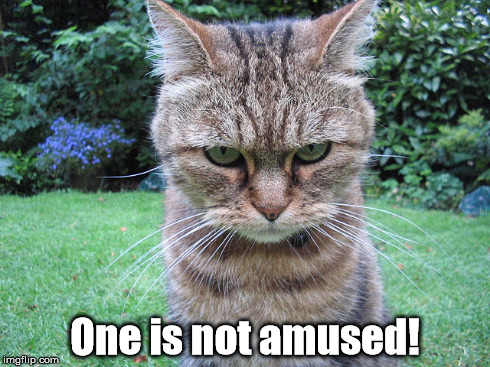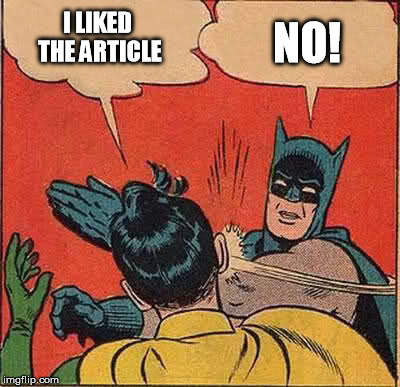I haven’t been doing much in the way of blogging recently (or any Sci Comm for that matter) but I’m pissed off and I had to get this off my chest…
On the 26th of November, New Scientist (NS) published an article focusing on new chemicals. “great” I thought “I love chemistry”. It was that issue’s cover story but it had the worrying blurb of “We’ve made 150,000 new chemicals. We touch them, we wear them, we eat them. But which ones should we worry about?” The article’s tagline read “Our food, furniture and frankly everything else is contaminated with industrial compounds – but how harmful are they? New Scientist investigates.”
You’d be forgiven for feeling concerned because it’s New Scientist. They’re a powerhouse of knowledge and (usually) bring good, solid science to anyone who’s interested. So as opposed to just sighing, and muttering something about chemophobia, I read on. However, before we go any further, I want to take a second to appreciate what this cover and tagline sets up in the readers mind. To outright state, what your average non-chemist may think.
On the cover we see the words touch, eat and wear. Potentially leading the reader to think that they’re covered in, and ingesting chemicals. The less informed may worry. The more informed probably aren’t ridiculously bothered, but this is New Scientist, not known for over-exaggerating things. readers are probably taking serious note of what’s to come. Next, we see “which ones should we worry about?” OK, our more informed reader may hold off from full-blown panic but the blurb is literally suggesting that we may need to worry about something.
The by-line reads, “frankly everything is contaminated with industrial compounds”. The language is loaded, isn’t it? I mean, they’re being frank! And it’s not just that manufacturers have used some chemicals to make things (not that even that would be bad). No, no, no. Chemicals are contaminating things. No, not even that. Everything is contaminated. Contaminated with Industrial compounds. Our only reason to feel like it’s safe to shake quietly is that in asking the question “how harmful are they?” we’re lead to believe that perhaps not all 150,000 are going to kill us. However, the tone so far is causing us to consider the possibility that frankly we might just be screwed here. Again, this is New Scientist, people respect their journalism – I respect their journalism. NS has a stellar reputation. Of course, I may be jumping to conclusions here. It’s not like the article was outright using words like toxic and saying that we ought to be concerned – shocked, even. So perhaps your average reader wasn’t in full-blown panic mode. Concerned, sure, but maybe not panicked. Not shocked! No cause for that. OK, on to the article and, the natural beginning, the title… Toxic Shockers… Oh. Oh dear.
So here we are, in an NS cover-article about toxic chemicals, worried about what we’re going to see. We’re now looking out for new chemicals that we need to add to our list of things to avoid. Avoid them like you’d avoid sitting next to “that guy” at the Christmas dinner. The article’s set up for you to feel anxious and draw you in. So what monstrosities await? (Deep breaths everyone.)
We’re greeted with three paragraphs telling us that apples may contain traces of “pollutants”. Pollutants such as fungicides, insecticides and herbicides. To the uninitiated this might well be a worrying few lines of text. It takes until the fourth paragraph for the authors to say that most of them are either within safe levels or have zero effect upon the human body. The intro is horrible and if your guard wasn’t up, you’d be thinking that nothing (not even maw and paw’s good ol’ fashioned wholesome apple) was safe. The thing is, these pesticides are designed for use in agriculture and they’re present to prevent crop failure; to prevent pests from ruining this food which you’re relying on to not die. They’re not there to kill you and (as we eventually find out) they’re often present well below harmful levels or are as dangerous as a tickle fight with a kitten. Reading on, we hope they’re going to address the “problem” of the remaining 149,999 new ways to die.
“Over the next five pages, we explain what we know about nine of the most frequently suspected substances.”
Nine…NINE! I mean I wasn’t expecting 150,000, but nine (where did 150,000 come from anyway?). Ok, it’s surely going to be nine brand new super-effective ways to die. It’s probably the equivalent to juggling revving-chainsaws whilst telling Vladimir Putin how much you admire Stephen Fry. I mean, it’s had some serious build-up. It has got to be the nine worst offenders. Right?
Painfully, as you read through the article, you realise that only five of the nine classes of compounds actually appear to have a discernible toxicity profile. In what seems like a joke at first (but mercilessly isn’t) the authors talk about burnt toast. They mention acrylamide as a potential carcinogen and go on to establish the link between certain food-types, cooking methods, and how one may go on to produce the other. This leads the less critical reader to assume that burning their toast, causes cancer. However the authors (eventually) go on to state that there isn’t even a shred of evidence to prove that acrylamide is a human carcinogen. Why is this here? Their big example of compounds that they deem “guilty as charged” are lead and mercury. Ignoring the headache-inducing cliché and focusing on the big “offender”, this is not breaking news! Lead is bad for you… No, no, please, I’ve got this. 1990s meet New Scientist, New scientist meet the 1990s. You guys have a lot to talk about.
Sadly, after reading the article, the real take-home point here is not that you should burn your apples and not burn your toast. It’s that New Scientist span out an article which was a Daily Mail-styled piece of click bait! Something which, in essence, said “Hey, you’re all going to die. Wanna find out how? Click here!” New Scientist put out an article designed to make you think that we were (to quote the authors) “up to our necks in chemicals” and then muddied the waters by talking about a select few, not all of which that were harmful. You walk away from the piece scratching your head as to why any of this was news-worthy and quite frustrated that it not only made it into New Scientist, but was the cover article.
I despair at the shape of things to come if this is the future of science communication. Yes the Daily Mail makes stacks of cash churning out this sort of shit, but I beg you, NS, don’t sell your soul. Once your reputation’s gone, there’s no going back. We shouldn’t stand for this. Read the article (sorry, paywall) and if it pisses you off as much as me, tweet them or do the Facebook thing. Hell, if that doesn’t work, let’s stand outside their offices and shout until the daily mail takes over. I’m going back to radio silence.


